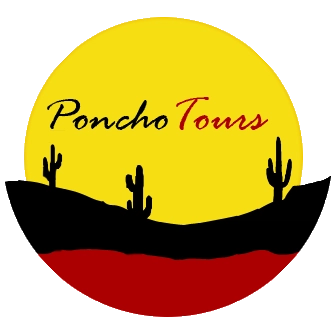LATEST: AFTER NEARLY TWO WEEKS, THE ROAD TO THE SALINAS GRANDES & SAN PEDRO DE ATACAMA RE-OPENED YESTERDAY (Thurs 28th March)
A tour we think you'll love
As I write this on 22nd March, the main road from Purmamarca to the Salinas Grandes salt flats, and onto San Pedro de Atacama, is closed after a landslide.
Last Friday, I returned from dropping off a guest in Chile, and passed the Salinas Grandes to be confronted by the blocked road, and a short line of traffic.
As I could see the earth movers working, I wasn’t unduly concerned, so I had my lunch and a quick siesta before taking a wander to see what was taking so long.
There was a 4×4 already stuck in mud which had covered at least a kilometre of the road (near Fidel’s excellent restaurant La Pekana, which many of you will know for its excellent empanadas and great views of the salt flats).
Soon a police car arrived to assess the situation, and officers told us there was going to be no way through.
A few of us went in convoy on a higher back road northwest of the Salinas Grandes, eventually emerging way north at Abra Pampa to join the main RN9 road from San Salvador de Jujuy to La Quiaca, on the border with Bolivia: a detour of more than 200 km, more than half of which was on rough unmade road.
I arrived in Purmamarca at nearly 10pm for the opening dinner of the wine vendimia of El Bayeh (more of which on my next blog).
More importantly than my delayed dinner date, the same mudslide swept through isolated homes near my roadblock, leaving two families homeless.
And a week ago, a huge storm at Humahuaca cut off the road to the Fourteen Coloured hill of Hornocal, one of the must-see tourist attractions in Jujuy.
According to my whatsapp groups, the province continues to remain on yellow alert for electrical storms.
And those of who follow me on Instagram will have seen footage of the terrible storms in Salta too.
Now, of course, this is rainy season, which I am careful to mention to any guests planning to come between January and March.
Those of you who have been passing through Buenos Aires may be aware of the huge storms and floods which have castigated the capital.
Between January 21st and February 12th, the country suffered a massive heatwave, with many places recording their highest ever temperature, according to Argentina’s Meteorological Office.
This is also an El Niño year: the World Meteorological Organisation reports that, worldwide, every month since June 2023 has established new monthly temperature records.
“2023 was, by far, the hottest year recorded. El Niño has contributed to these record temperatures, but the greenhouse gases which trap the heat are unequivocally the main culprits”, said Prof Celeste Saulo, secretary general of the WMO.
I only remember once in 16 years in which the main road to San Pedro de Atacama was cut off: and then for only 24 hours.
This year it’s already been cut off once for a day: and now it’s been out of action for a week.
The Quebrada de Humahuaca was completely dry during January, suffered heavy rain during February: and as I write this blog, eight roads in Jujuy are currently impassable due to landslides or heavy mud as we approach the end of March.
Weather charts from the SMN, Argentina’s national weather office, show lower rainfall than usual in most areas of Jujuy during January (in some parts dramatically lower), while in February it’s been above the normaly monthly average.
Bearing in mind February tends to be the wettest month, at Jujuy airport it recorded more than 300mm of rain, compared to a normaly monthly average of 120mm.
Salta city records similar figures for February after 200mm and 180mm during January and December respectively (January figures being double the normal average).
All the weather stations in Jujuy and Salta provinces, have recorded higher than average temperatures for every month in the last year.
Luckily at Poncho Tours we’ve only had minor interruptions to our trips, with Route 40 from Susques to San Antonio being cut off, and the road to Hornocal not always accessible.
Living here for 16 years in a part of the world with dramatic tropical storms has taught me to respect the power of nature.
During last year’s rainy season, two tourists from Buenos Aires and a local guide, 60-year-old Santos Jesús Cruz were tragically killed in Calilegua Cloud Forest, when their vehicle crashed off the road, after heavy rain.
Caliliegua is not somewhere we go at all during rainy season but now it appears many areas of the northwest are becoming increasingly complicated.
Luckily Autumn officially started yesterday, bringing a wave of cooler weather: fingers crossed, the worst of the rain is now over.






